At the beginning of "Safety Production Month", to enhance the safety protection ability and safety awareness of teachers and students, the School of Materials Science and Engineering (SMSE) of Shanghai Jiao Tong University (SJTU) held a safety first aid knowledge training and practical exercises. Professor Liu Jinsheng, director of Shanghai Jiao Tong University Hospital, was invited as the invited trainer, and Huang Xiaolan, deputy chief physician, as the assistant instructor. Professor Feng Chuanliang, Vice Dean of SMSE, Cao Lijun, Assistant Dean, and representatives of teachers and students, totaling more than 30 people, attended the event. The event was hosted by Professor Feng Chuanliang.
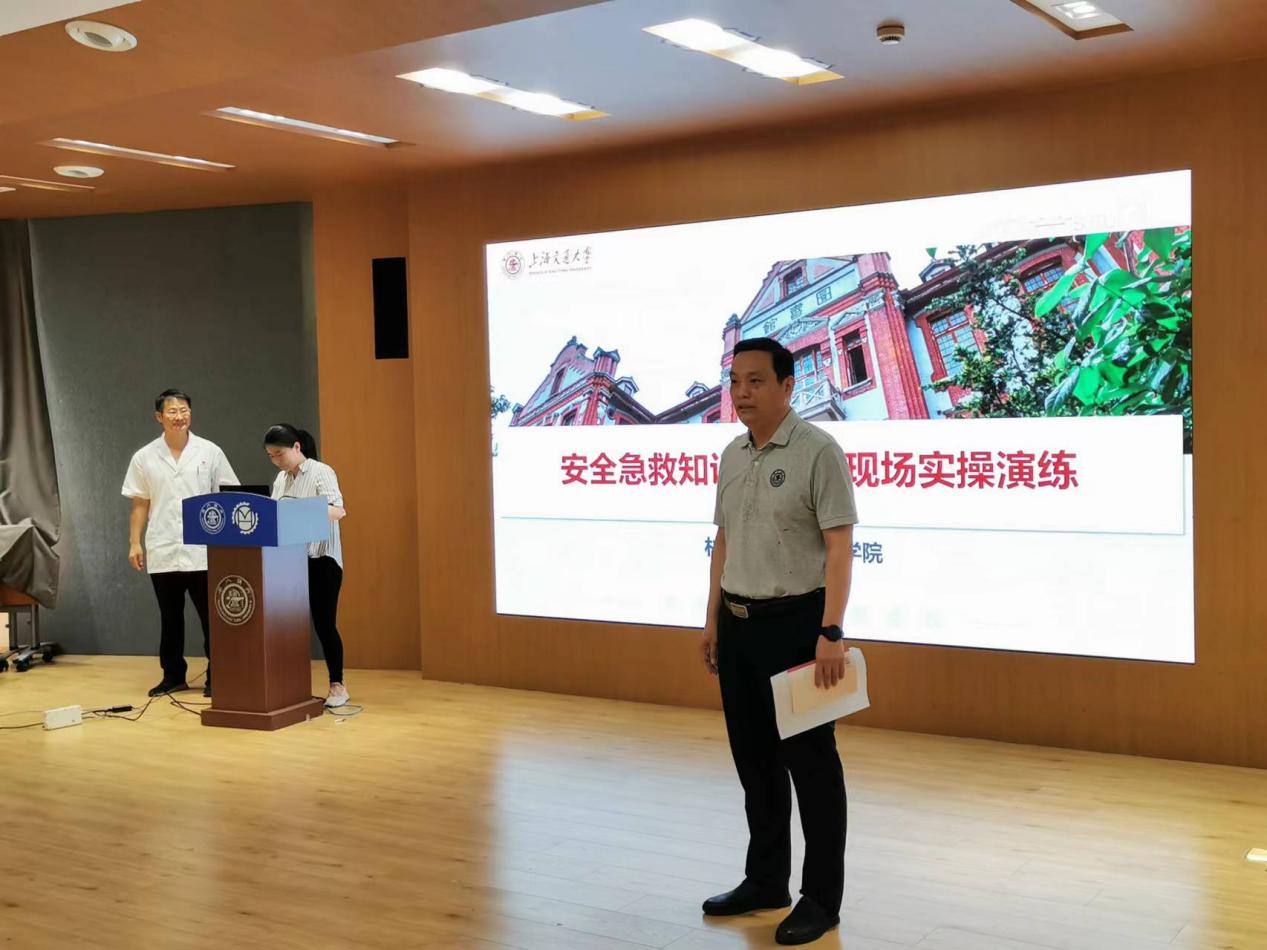
Professor Feng Chuanliang made an opening speech. He firstly expressed his gratitude to Mr. Liu and also hoped that through this training, teachers and students could improve their emergency awareness and self-rescue ability in the face of emergencies and accidental injuries.
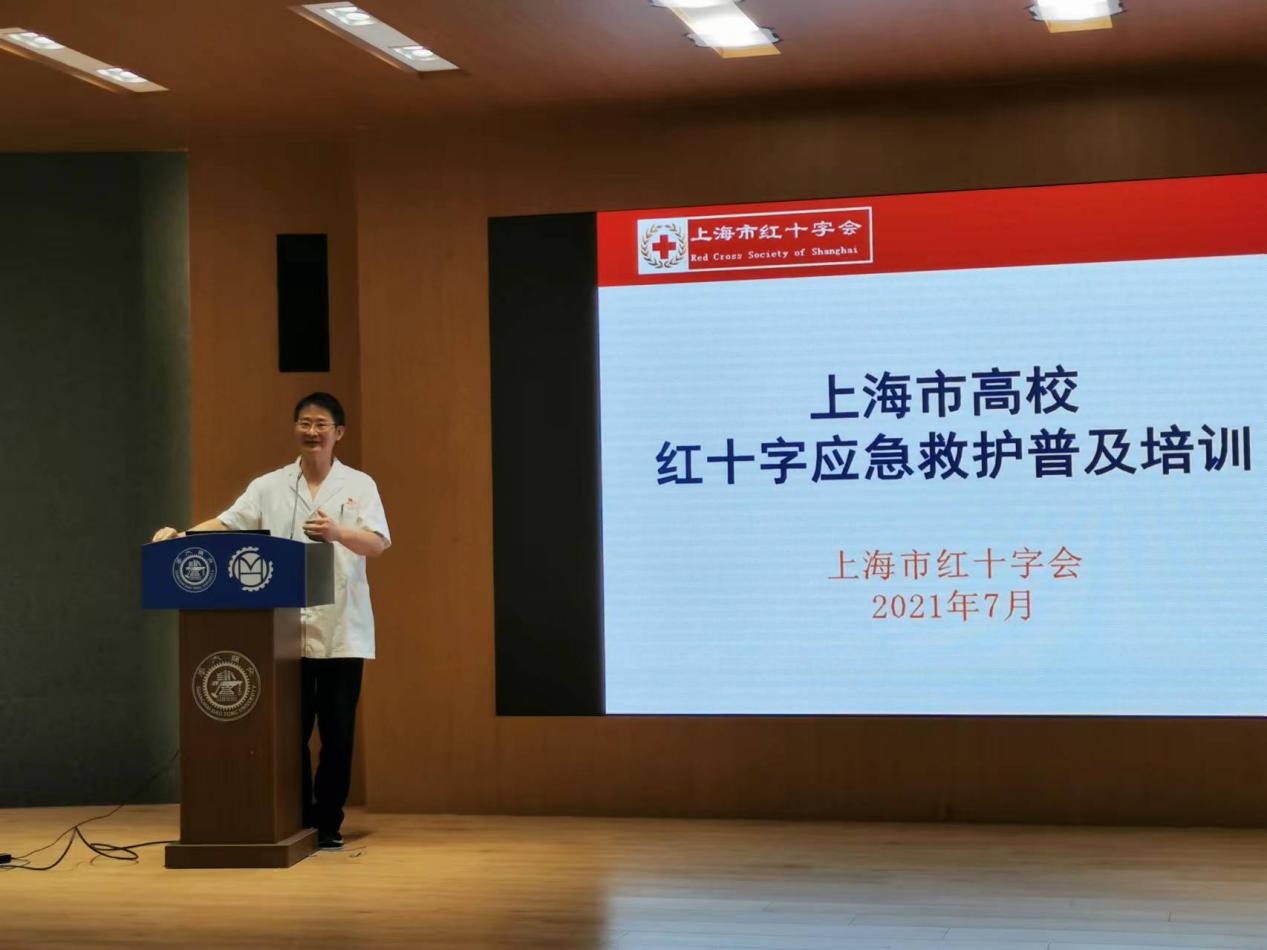
The formal training started, and Mr. Liu Jinsheng shared some of his personal experiences to let everyone understand more visually and deeply the necessity of popularizing emergency rescue knowledge and mastering basic first aid skills. Through these examples, Mr. Liu pointed out that "the golden time for first aid in cardiac arrest is 4 to 6 minutes, and every minute earlier will increase the success rate of resuscitation by 10%", and this point was repeatedly emphasized in the subsequent theoretical lectures and practical exercises. Meanwhile, Mr. Liu also performed the Heimlich maneuver for everyone.
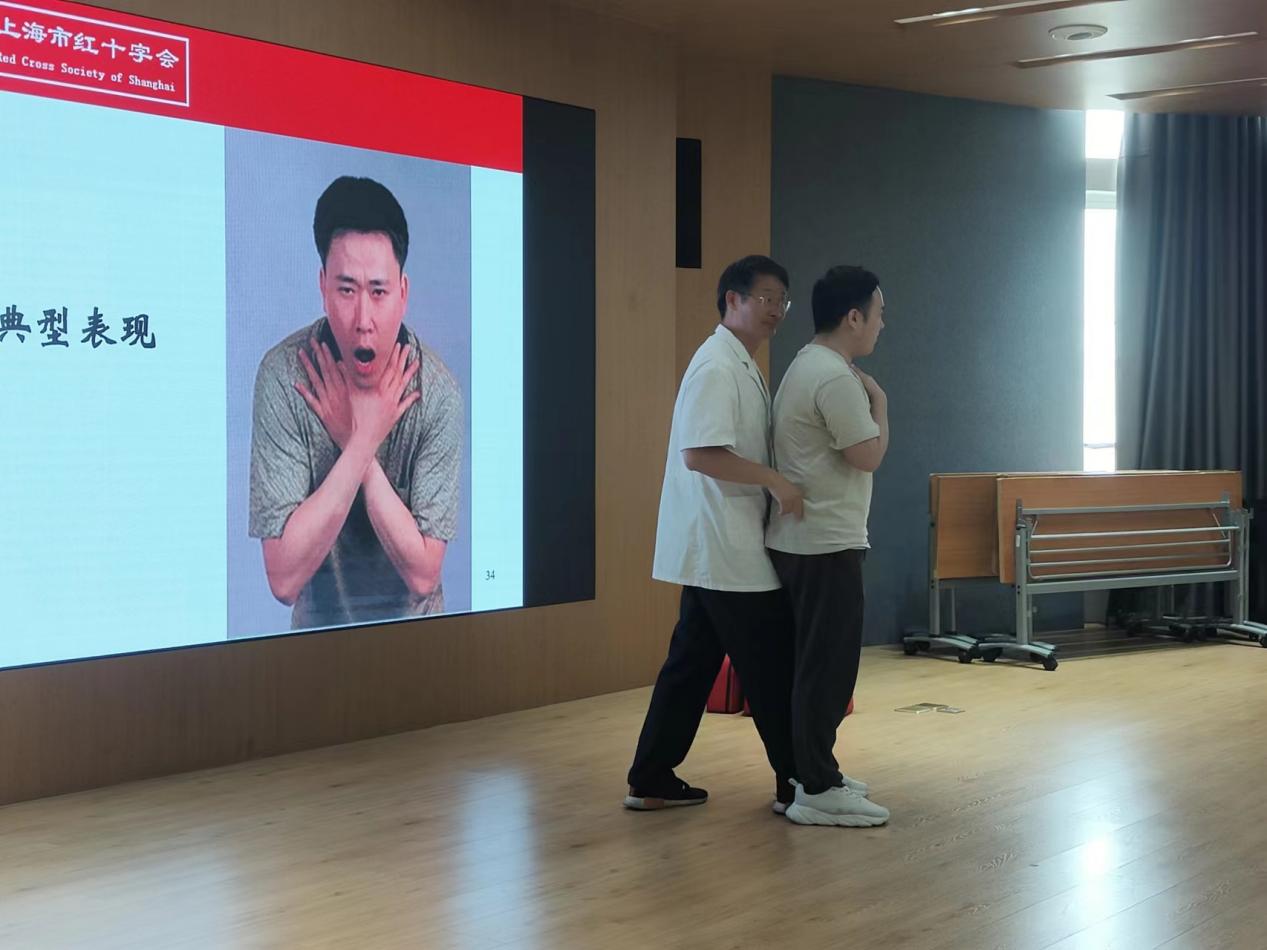
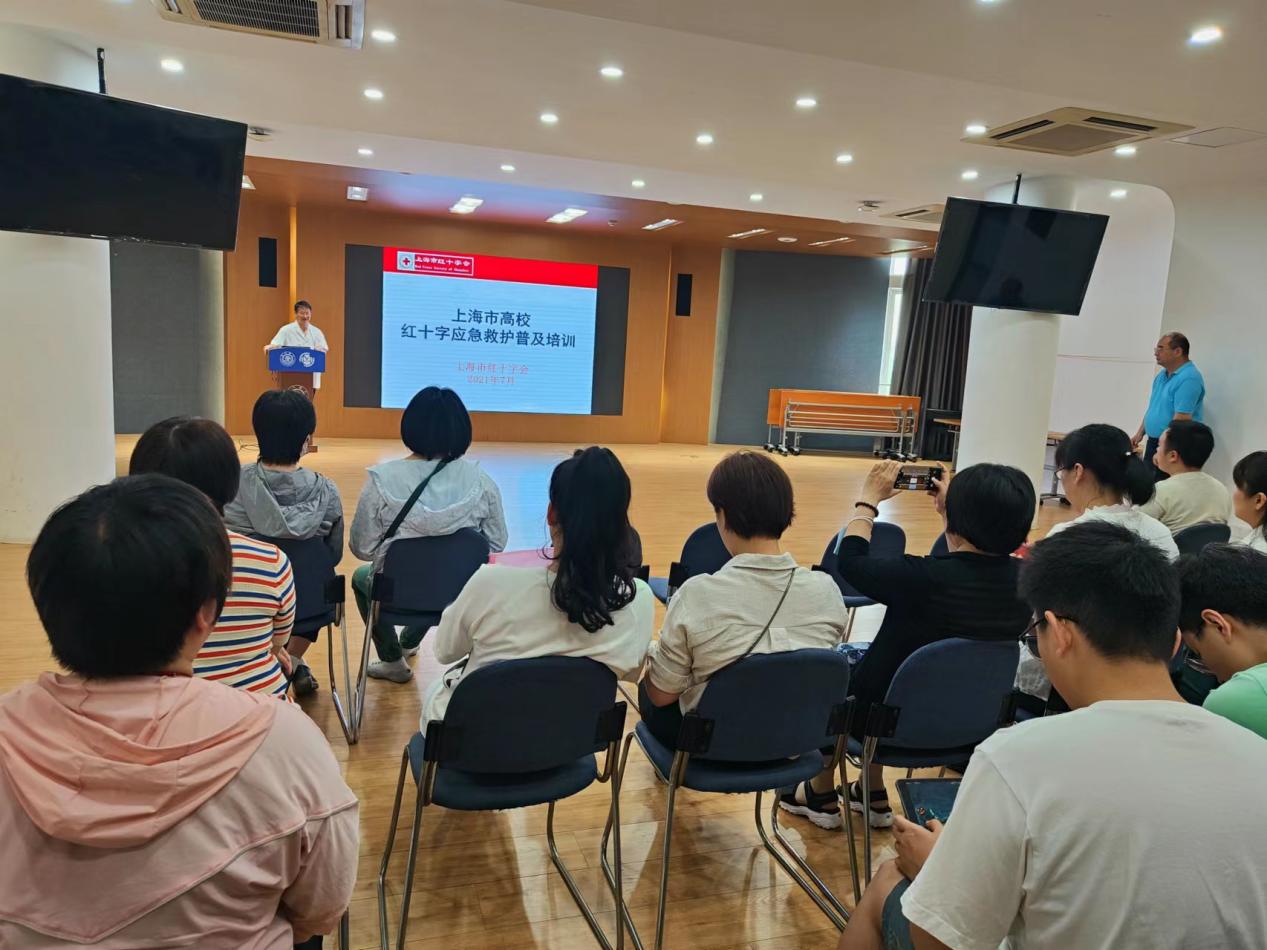
Then, Mr. Liu Jinsheng gave theoretical guidance from the introduction of on-site first aid, injuries caused by disaster accidents, points to note in first aid, and how to do personal protection, etc. In terms of points to note in first aid, he emphasized the correct posture, frequency, and method of chest compressions and artificial respiration and the utilization of AED, which provided a theoretical basis for the next practical exercises.
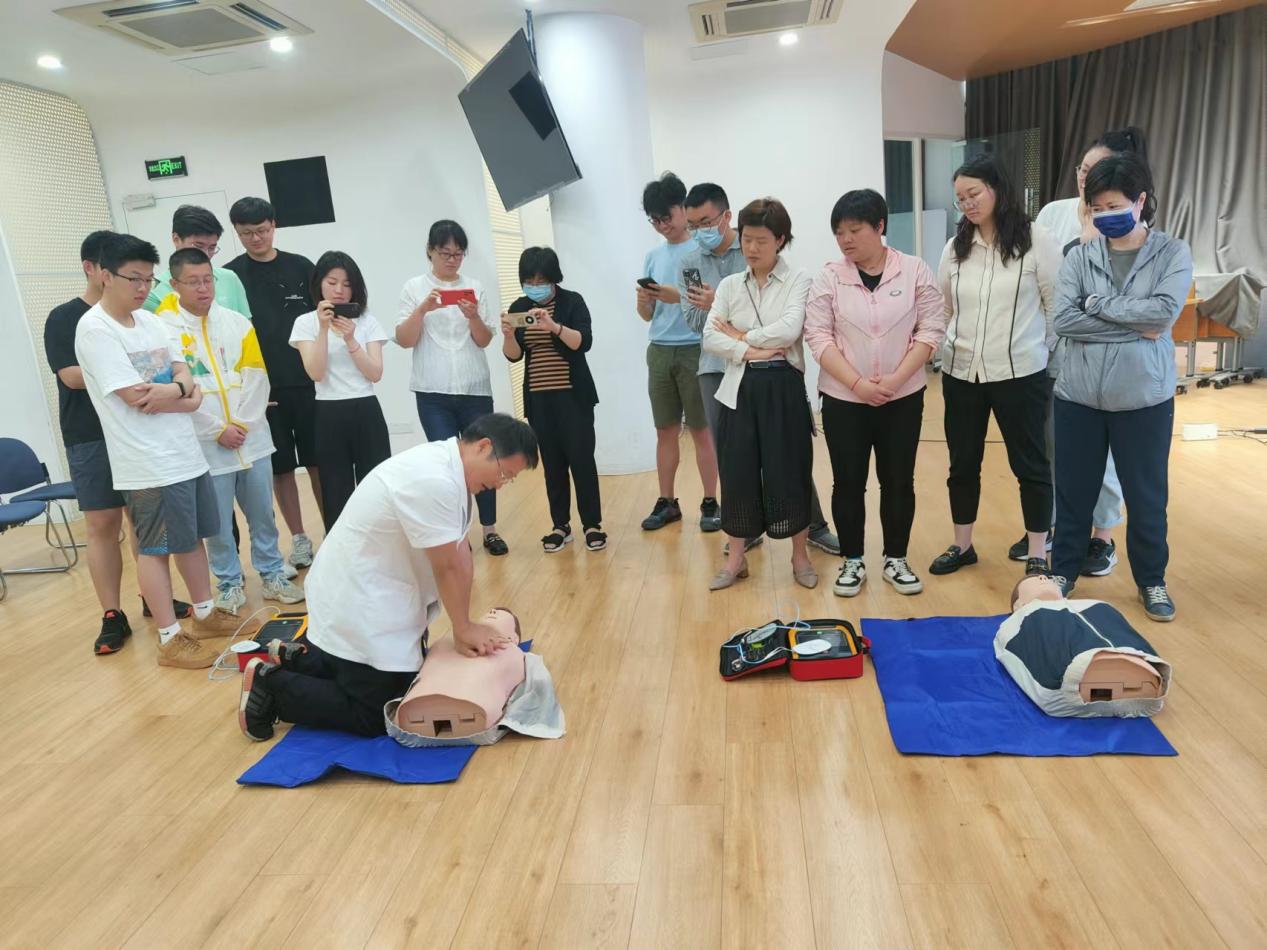
Mr. Liu Jinsheng personally performed the standard operation of cardiopulmonary resuscitation (CPR) and the use of AED automatic external defibrillator, emphasizing some details related to the success rate of resuscitation, such as checking whether the patient has a pulse and breathing before the first aid, designating someone to call 120 and take AED; the rescuer should have overlapping palms, interlocking fingers, vertical arms, with the palm root located in the center of the male two nipple line, and the elbow should not be bent. The compression depth is 5 to 6 cm, and the compression frequency is 100 to 120 times per minute; when using the AED, the two patches should be attached to the left side outside the nipple and the right side under the clavicle to ensure that no one touches the patient during the electric shock, etc. Liu also repeatedly cautioned everyone to stay calm and respond calmly when encountering unexpected situations.
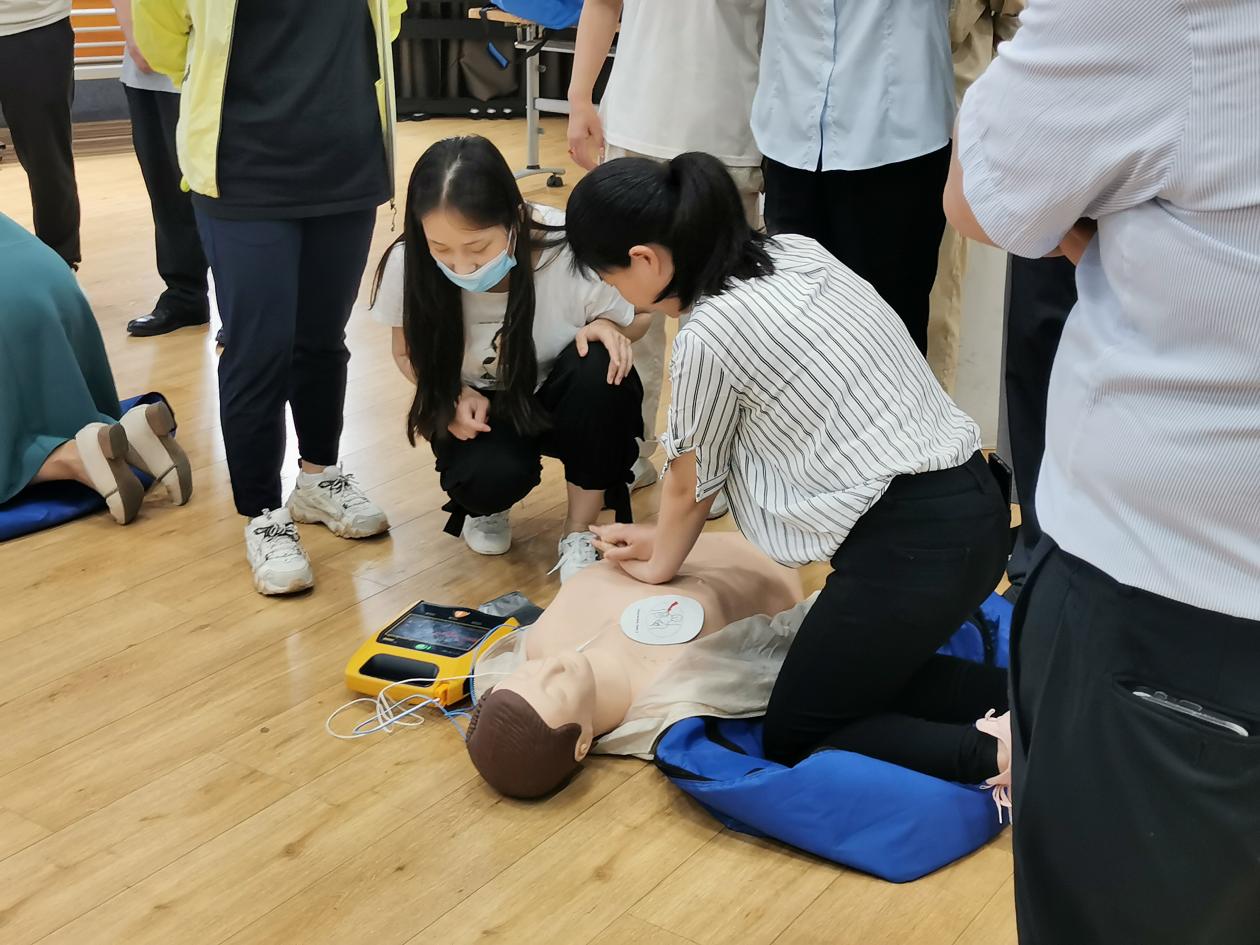
The participating teachers and students were divided into two groups to carry out practical exercises. Everyone first practiced the pre-suscitation check with their partners and felt the pulse and breathing. Then, each person in turn practiced the pre-rescue operation, 5 minutes of chest compressions, artificial respiration, and the use of AED. During this period, Mr. Liu gave guidance to each group of students in turn to make everyone's actions more standardized. He pointed out, "Everyone in the process of first aid should not be like acting, but should be substituted into the real situation, so that they can successfully rescue the patient in the future in an unexpected situation."

Through the first aid training, students and teachers not only enhanced their awareness of first aid, mastered the basic first aid knowledge and skills, but also comprehensively improved their resilience in the face of unexpected safety events. The college will continue to carry out a series of safety training activities to protect the safe campus construction.
